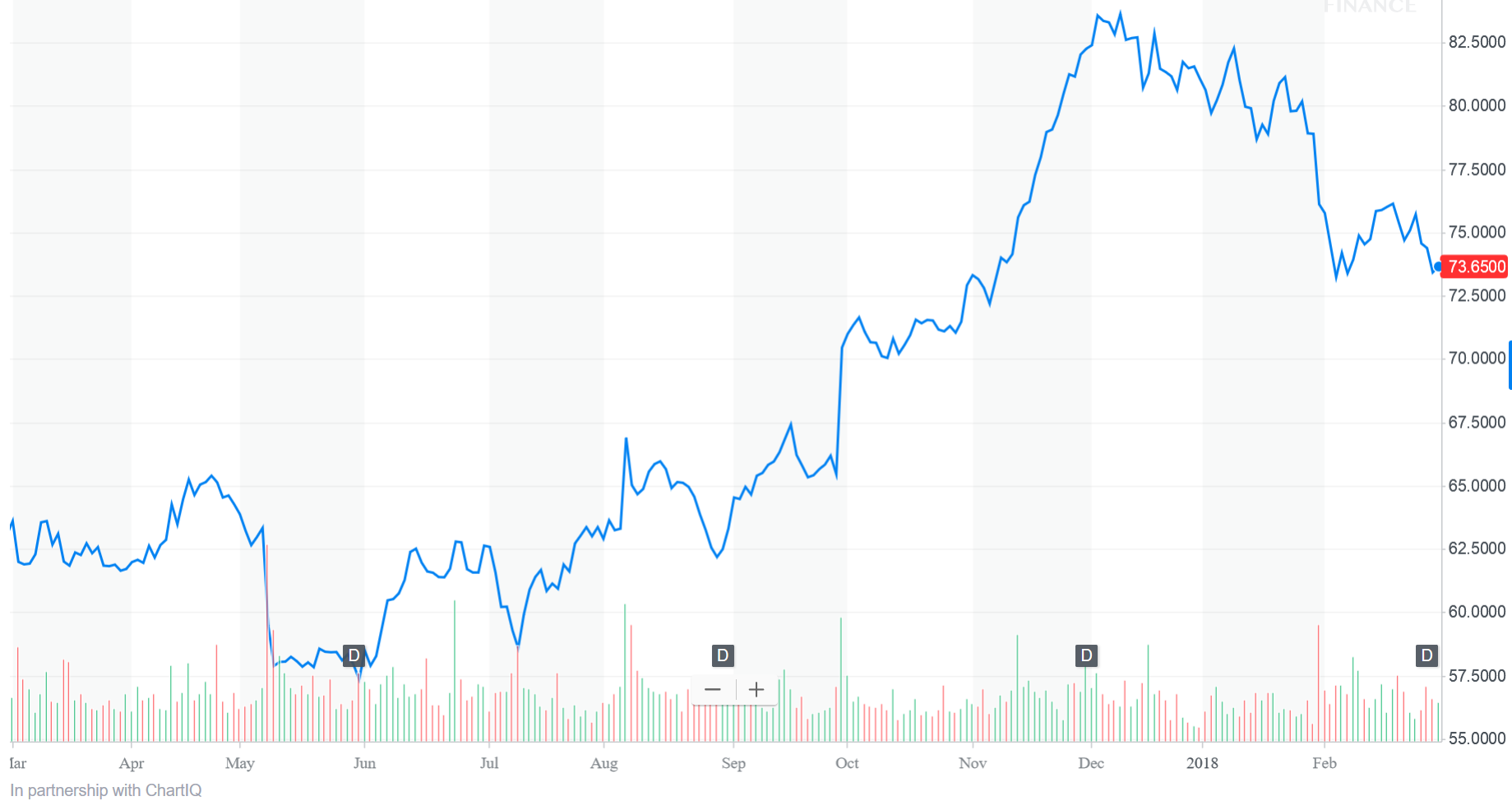Tyson Foods' Segment Performance Suggests Stock Is A Buy
Tyson (TSN) is one of our favorite plays in the protein supplier sector. The company provides chicken, beef, pork, and a variety of prepared foods to both retail and commercial restaurants. The stock has been volatile, but has trended higher in the last year:

Source: Yahoo Finance
As you can see, the name often jumps, and has seasonal strength. That said, over time the name has continued to improve. In this column, we touch specifically upon the trends we are noticing in each of the key segments of the company, as these are the underlying drivers of revenue and earnings strength, both of which have improved over the last few years.
Chicken is the flagship product
The flagship product for Tyson is chicken. Tyson saw sales volume and average sales prices that rose 3.2% and rose 7.3%, respectively, year-over-year in Q2 2018. More specifically, Tyson saw sales of $2.997 billion versus $2.706 billion last year for chicken products. Expenses weighed here as operating income rose but only slightly to $272 million versus $263 million in Q1 2017. Demand remains strong and sales volume for chicken products up on an organic basis however the purchase of AdvancePierre helped significantly. As such, be mindful of the volume from the generated from the AdvancePierre acquisition.
We also want to point out that when we looked into pricing we noticed a promising trend. Average sales price increased a lot, but this was due to sales mix changes. Operating income benefited from cost savings programs. The positive incremental impact of AdvancePierre and slightly lower feed costs helped tremendously, but higher labor and freight expenses offset some of this.
Looking ahead, we expect both sales volume to improve as well as margins here thanks to efforts to control input costs.
Pork sales are volatile
The pork segment continues to be volatile. Quarter-to-quarter, we continuously see concerning trends, followed by promising ones. In Q1, the segment saw a decline in volume of 2.6% which stuck out. However, this was offset by a strong 5.2% increase in prices.
As such, revenues were up slightly to $1.283 billion from $1.252 billion last year. There were effective dealings in the hog markets but higher operating costs weighed. This led to Tyson's operating income falling to $152 million from $247 million in last year's quarter.
Looking ahead, we expect more of the same in this space. We think pricing will be elevated from our read on the Hog markets, but do have volume concerns. We are hopeful expenses will be controlled but think operating income continues to see pressure.
Trends improve in beef
Turning to beef we know prices here have been rising quite rapidly the last 5 years. In Q1 2018, consumers saw the average sales price for Tyson’s products rise year-over-year (up 5.4%). But it did not weigh on demand as volumes were up 4.5%. Sales were up to $3.886 billion from $3.528 billion. However, operating income fell $256 million from $299 million thanks to higher live fed cattle costs, increased labor and higher freight costs.
Looking ahead, we think cattle prices continue to rise, which could hurt input costs but this will be passed on to the consumer. Where we are looking for improvement is in expense management. Between processing and labor initiatives, we think operating income will rise.
Prepared foods turn the corner thanks to AdvancePierre
Turning to prepared foods, the company had been struggling but the addition of AdvancePierre benefited the segment. Sales were up to $2.292 billion from $1.895 billion. Both average sales price and volumes increased heavily. What is more, sales prices jumped 8.4% while volume rose 11.6%. Operating income also widened to $261 million from $190 million, while margins expanded from 10% to 11.4%.
Looking ahead, we anticipated a continued positive impact of this acquisition in this segment which has seen pressure for several years coming into the AdvancePierre purchase. This segment is one we will be watching closely.
2018 projections
Combining each of our outlook conclusions by segment and factoring in macro data we notice several trends and have a few key conclusions. Looking ahead it seems that domestic protein production my rise according to the company but heavy exports and high domestic demand will offset these rises. This needs to be watched closely.
In addition to having AdvancePierre, the tax reform law should significantly benefit the bottom line. Given the trajectory of sales and strength in most segments, we see sales rising in the high single-digits. Factoring in the most recent data reads, we are looking for $40.29 billion to $41.34 billion for the year on the top line. Including the positive impacts of tax reform, and assuming comparable expense growth this year, we anticipate adjusted earnings per share of $6.59-$6.84. We remain bullish on the company and the stock going forward.
Quad 7 Capital is a leading contributor with various financial outlets. If you like the material and want to see more, scroll to the top of the article and hit "follow." Quad 7 Capital also ...
more


